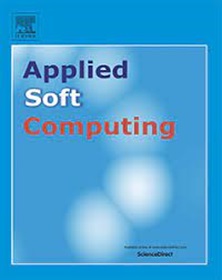用于少镜头多变量时间序列预测的共享多尺度轻量级卷积生成网络
IF 7.2
1区 计算机科学
Q1 COMPUTER SCIENCE, ARTIFICIAL INTELLIGENCE
引用次数: 0
摘要
时间序列预测是一种重要的时间序列数据挖掘技术。其中,多变量时间序列(MTS)预测在许多领域受到广泛关注。然而,现有的许多 MTS 预测模型通常依赖于大量的标注数据进行模型训练,而数据收集和标注在实际系统中很困难。数据量不足使得模型难以充分学习数据的内在模式和特征,这不仅增加了预测误差,而且难以获得令人满意的预测结果。为了应对这一挑战,我们提出了一种共享多尺度轻量级卷积生成(SMLCG)网络,通过使用样本生成策略来进行少序列多变量时间序列预测。总体目标是设计一个共享多尺度特征生成预测框架,生成与原始样本高度相似的数据,并丰富训练样本以提高预测精度。具体来说,将 MTS 分成不同尺度,利用多尺度特征融合模块捕捉并融合不同空间维度的 MTS 信息,消除数据间的异质性。然后,利用轻量级卷积生成网络捕捉多尺度特征中的关键信息,并动态分配特征权重以探索变化信息。此外,还设计了基于参数共享策略的时空记忆模块,通过学习多尺度特征中的共性知识来捕捉序列的时空动态关系,从而提高鲁棒性和泛化能力。通过在四个公开数据集上的综合实验以及与其他已报道模型的比较,证明了 SMLCG 模型能在少镜头情况下高效生成近似样本,并提供出色的预测结果。SMLCG 的结构为解决多变量时间序列中的少点问题提供了有价值的参考。本文章由计算机程序翻译,如有差异,请以英文原文为准。
A shared multi-scale lightweight convolution generative network for few-shot multivariate time series forecasting
Time series forecasting is an important time series data mining technique. Among them, multivariate time series (MTS) forecasting has received extensive attention in many fields. However, many existing MTS forecasting models usually rely on a large amount of labeled data for model training, and data collection and labeling are difficult in real systems. The insufficient amount of data makes it difficult for the model to fully learn the intrinsic patterns and features of the data, which not only increases the prediction error, but also makes it hard to obtain satisfactory prediction results. To address this challenge, we propose a shared multi-scale lightweight convolution generative (SMLCG) network for few-shot multivariate time series forecasting by using samples generation strategy. The overall goal is to design a shared multi-scale feature generation prediction framework that generates data highly similar to the original sample and enriches the training sample to improve prediction accuracy. Specifically, the MTS is divided into different scales, and the multi-scale feature fusion module is utilized to capture and fuse the MTS information in different spatial dimensions to eliminate the heterogeneity among the data. Then, the key information in the multi-scale features is captured by a lightweight convolution generative network, and the feature weights are dynamically assigned to explore the change information. In addition, a spatio-temporal memory module is designed based on the parameter sharing strategy to capture the spatio-temporal dynamic relationship of sequences by learning the common knowledge in multi-scale features, thus improving the robustness and generalization ability. Through comprehensive experiments on four publicly available datasets and comparisons with other reported models, it is demonstrated that the SMLCG model can efficiently generate approximate samples in the few-shot case and provide excellent prediction results. The architecture of SMLCG serves as a valuable reference for practical solutions to address the few-shot problem in multivariate time series.
求助全文
通过发布文献求助,成功后即可免费获取论文全文。
去求助
来源期刊

Applied Soft Computing
工程技术-计算机:跨学科应用
CiteScore
15.80
自引率
6.90%
发文量
874
审稿时长
10.9 months
期刊介绍:
Applied Soft Computing is an international journal promoting an integrated view of soft computing to solve real life problems.The focus is to publish the highest quality research in application and convergence of the areas of Fuzzy Logic, Neural Networks, Evolutionary Computing, Rough Sets and other similar techniques to address real world complexities.
Applied Soft Computing is a rolling publication: articles are published as soon as the editor-in-chief has accepted them. Therefore, the web site will continuously be updated with new articles and the publication time will be short.
 求助内容:
求助内容: 应助结果提醒方式:
应助结果提醒方式:


